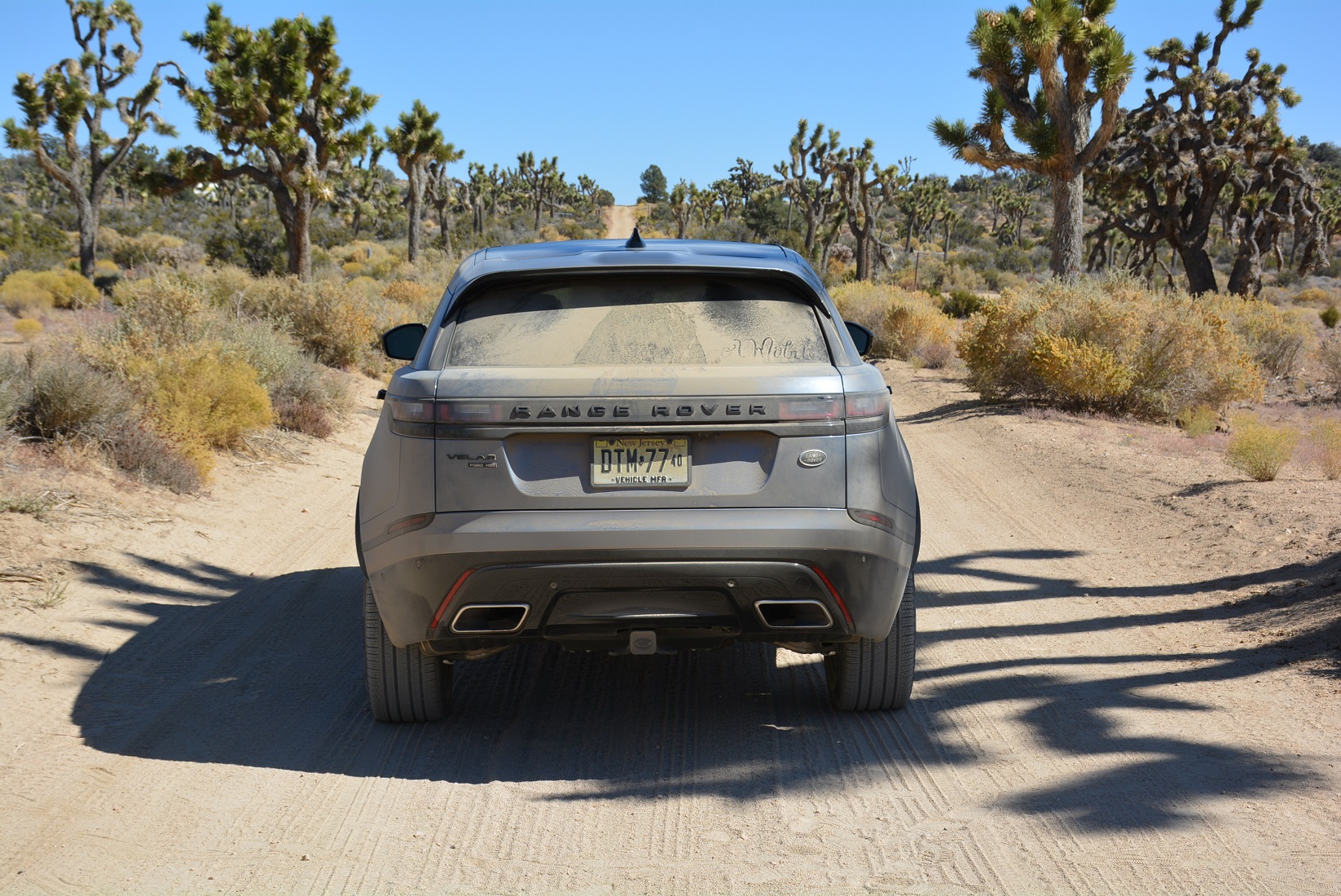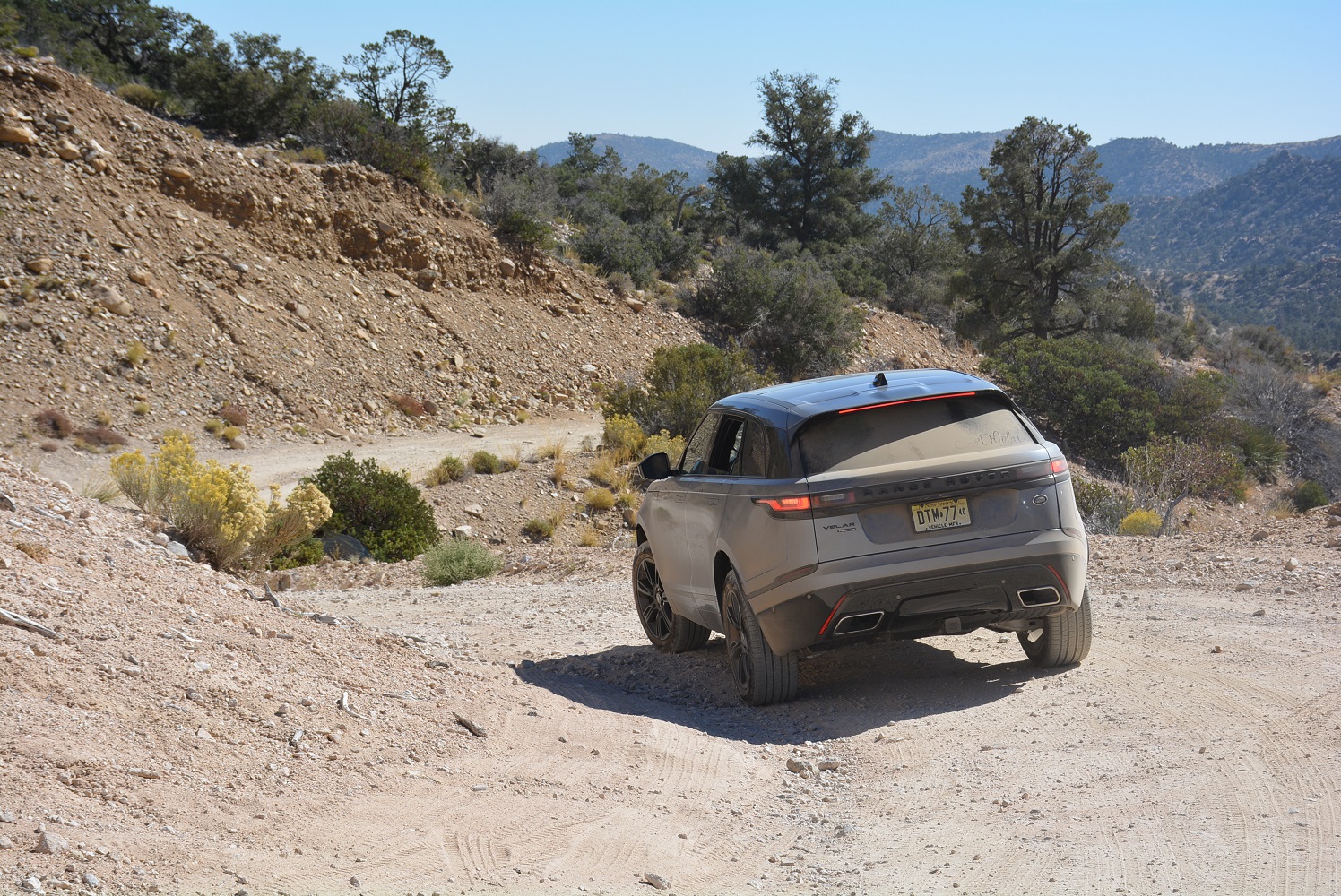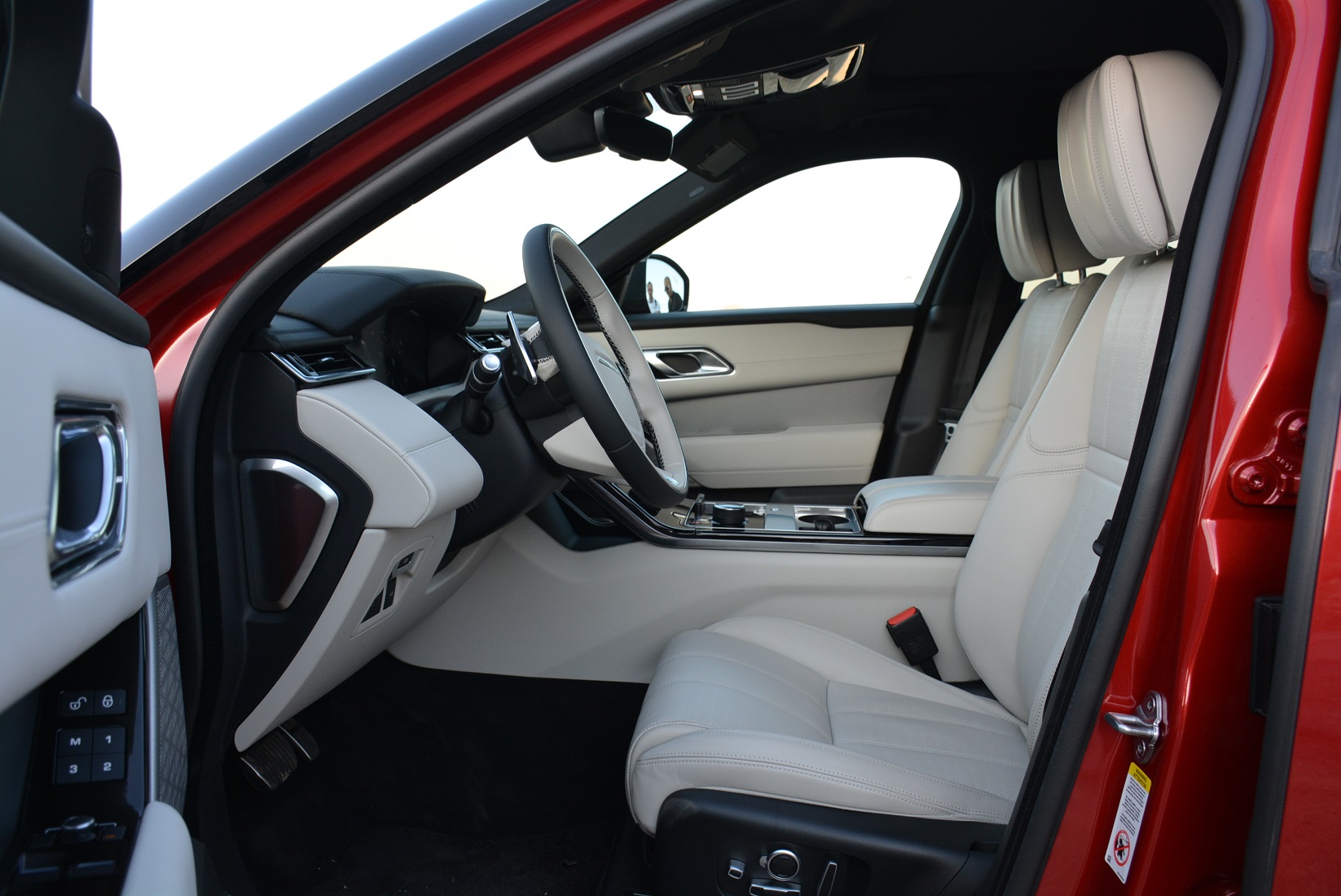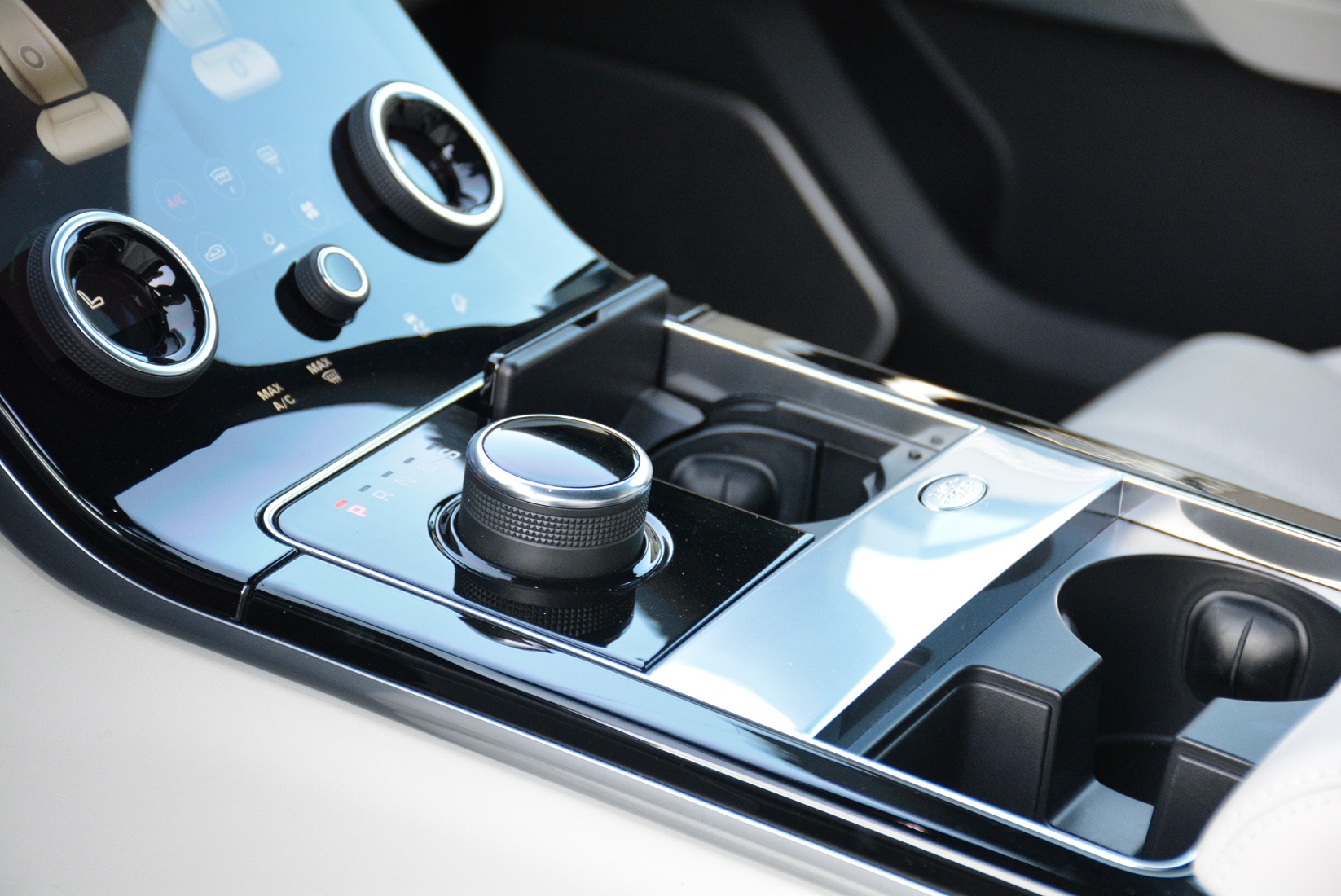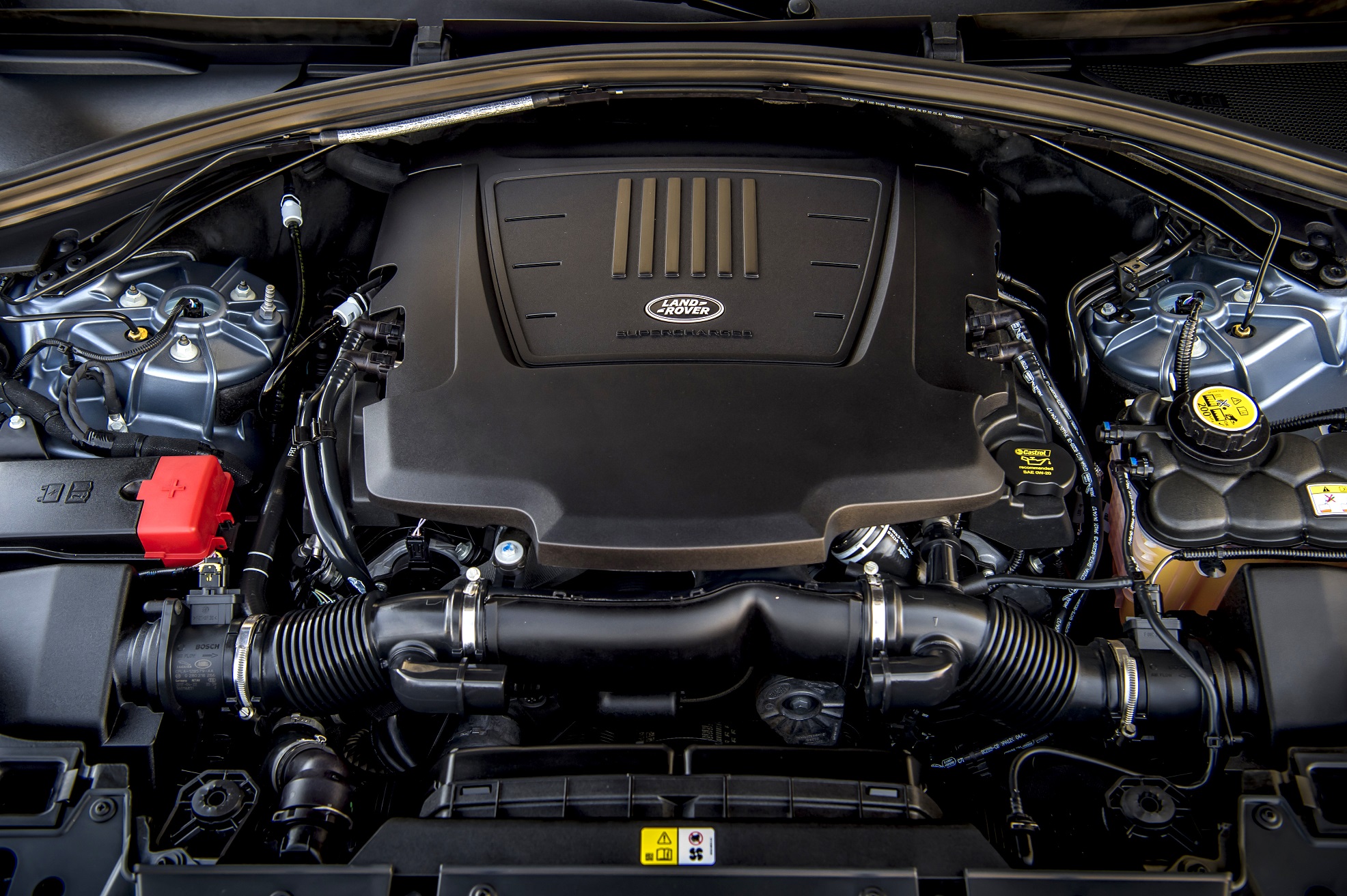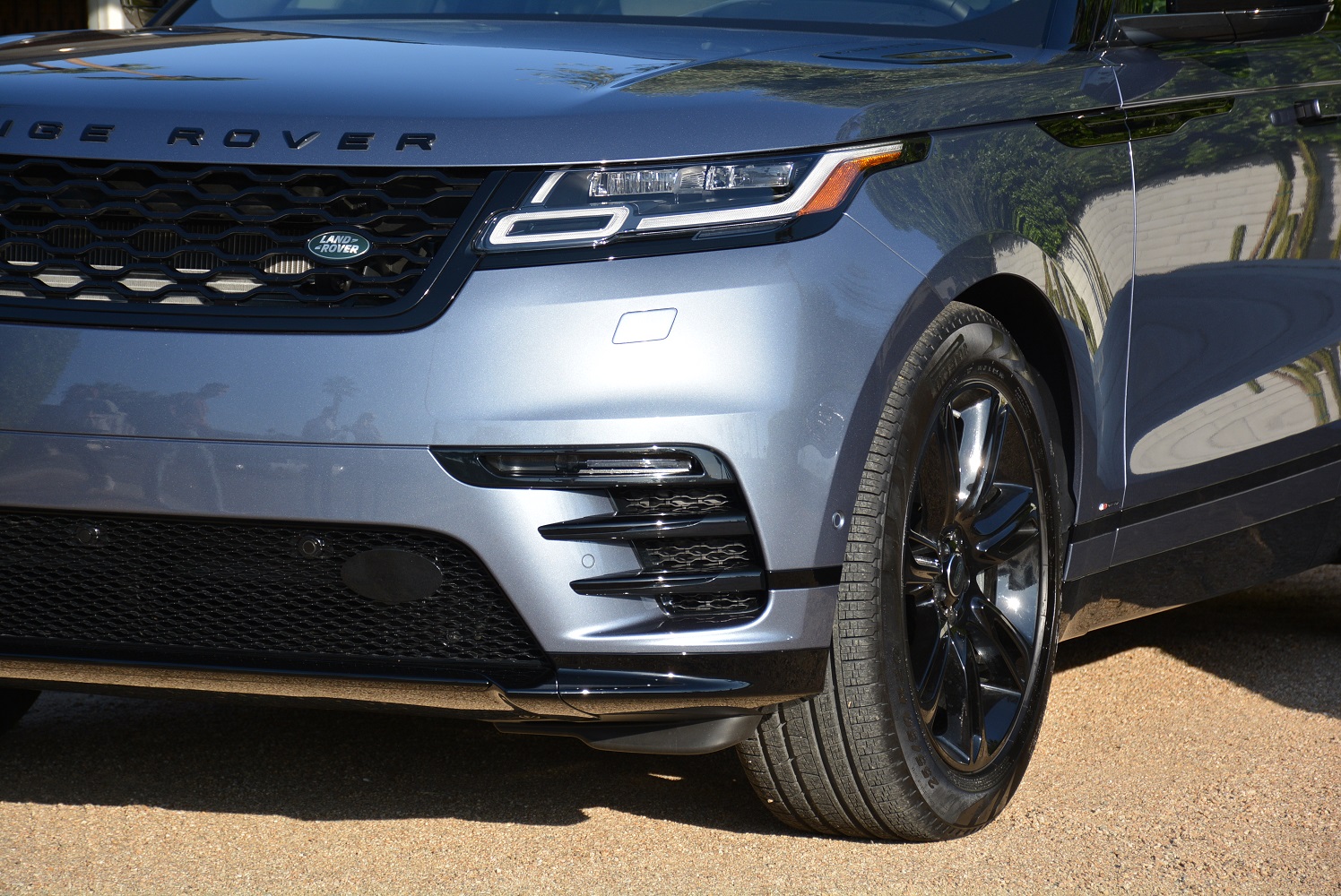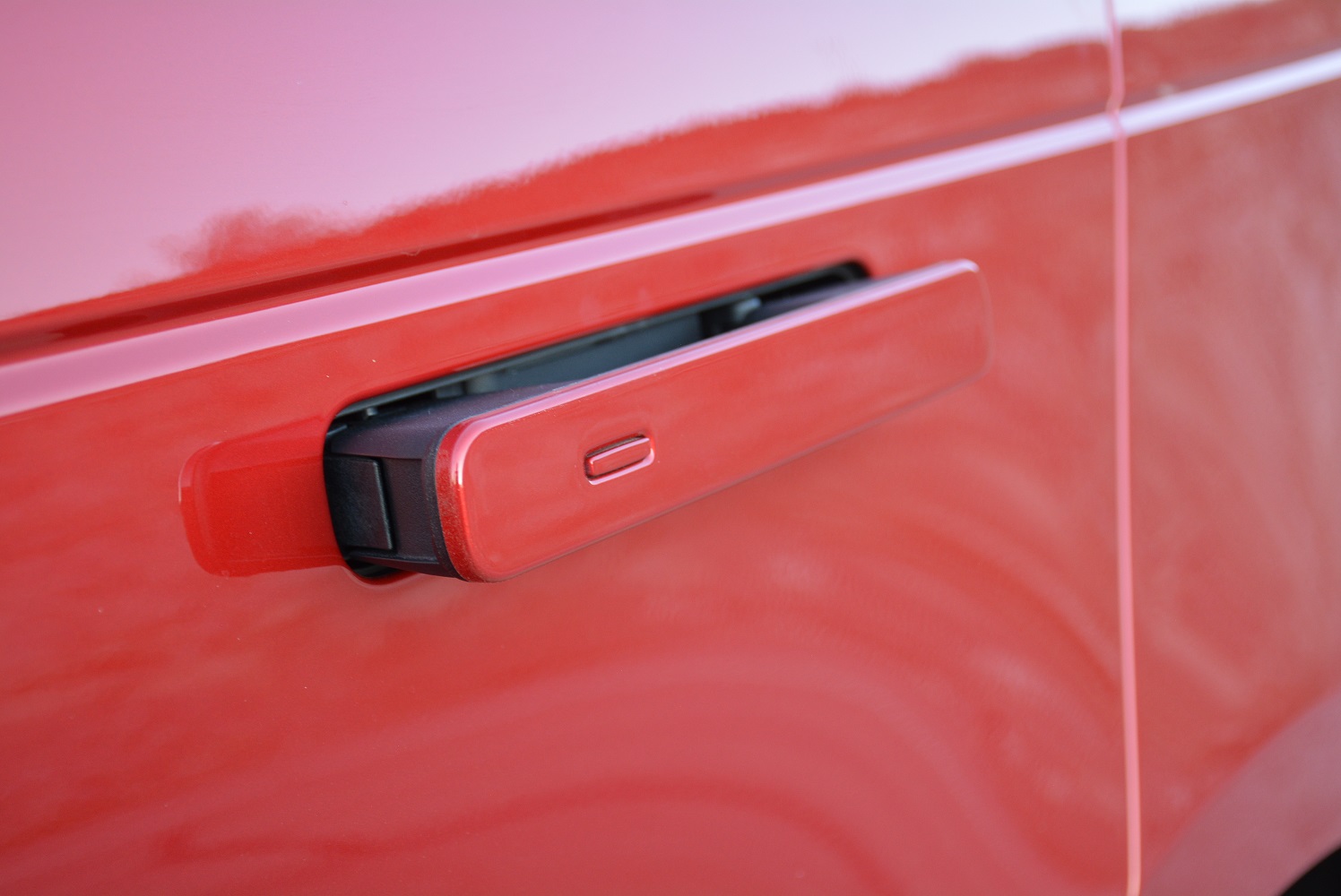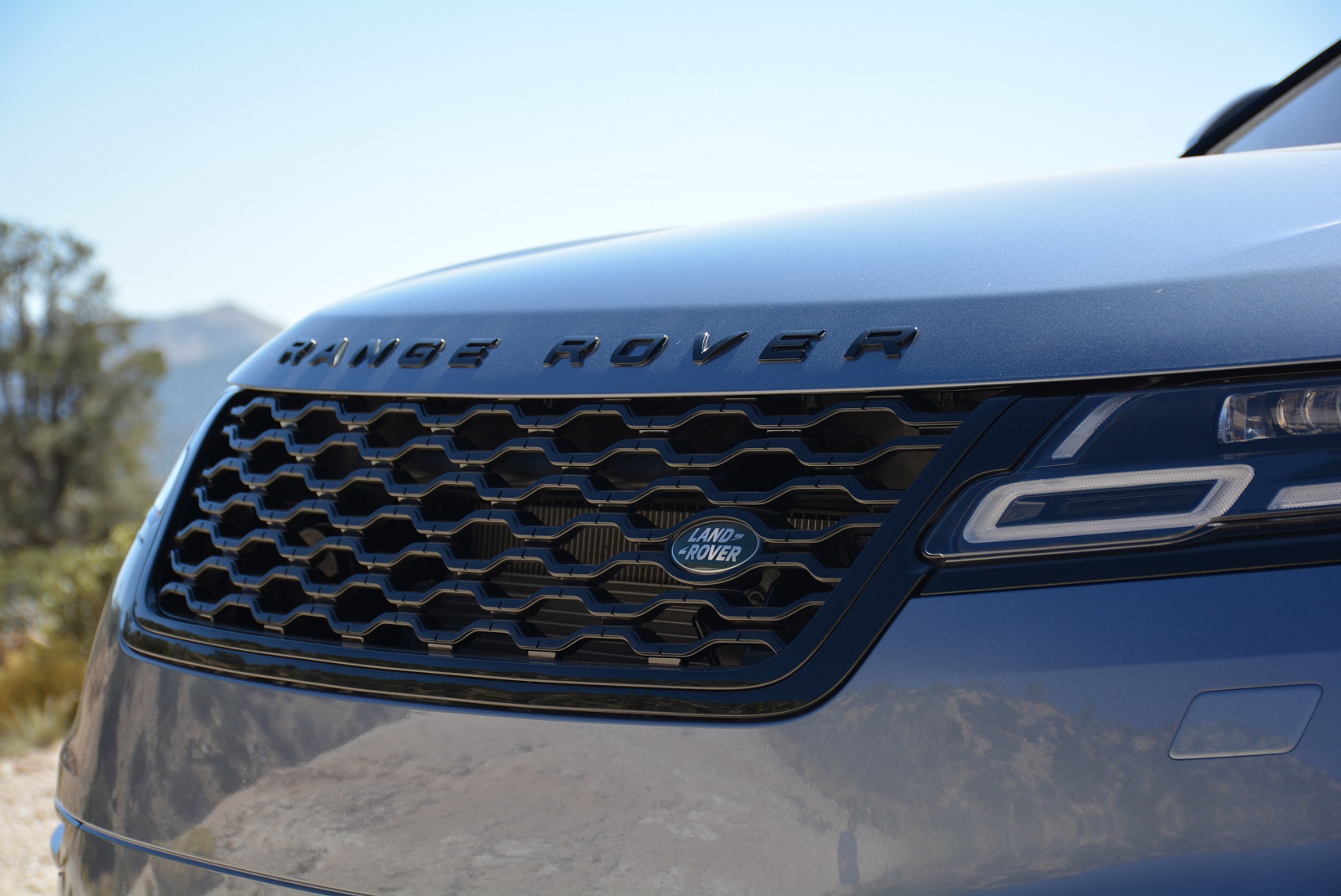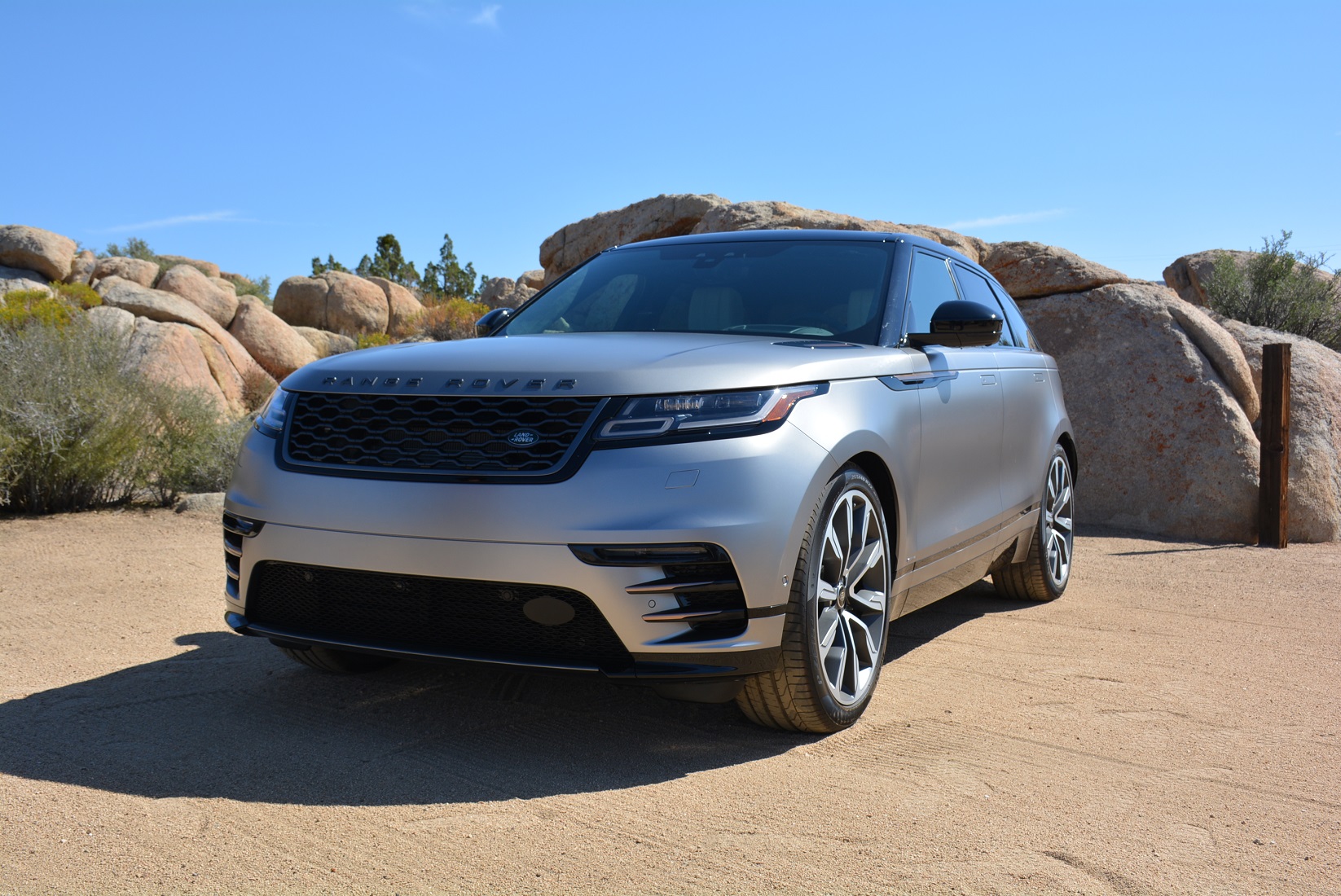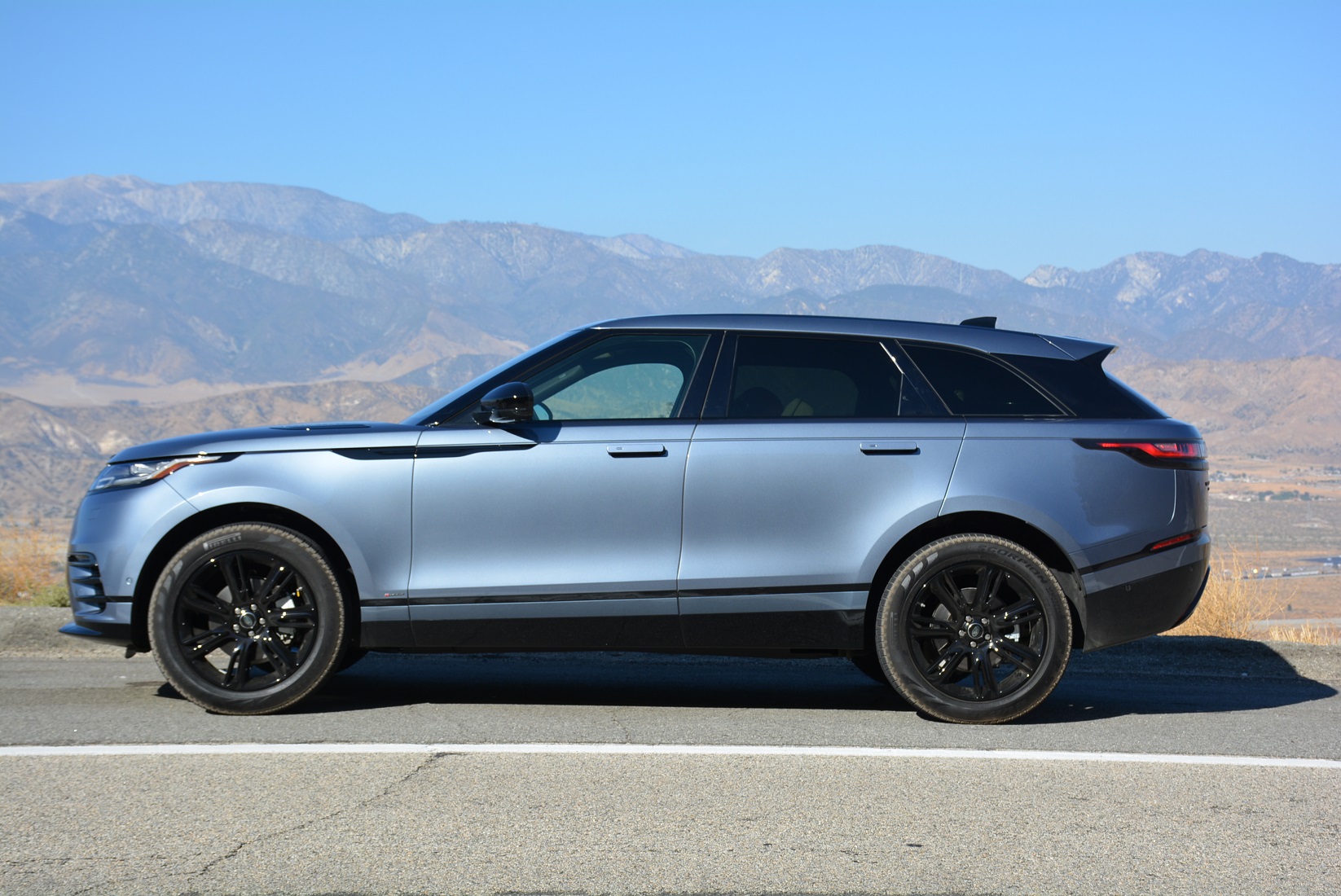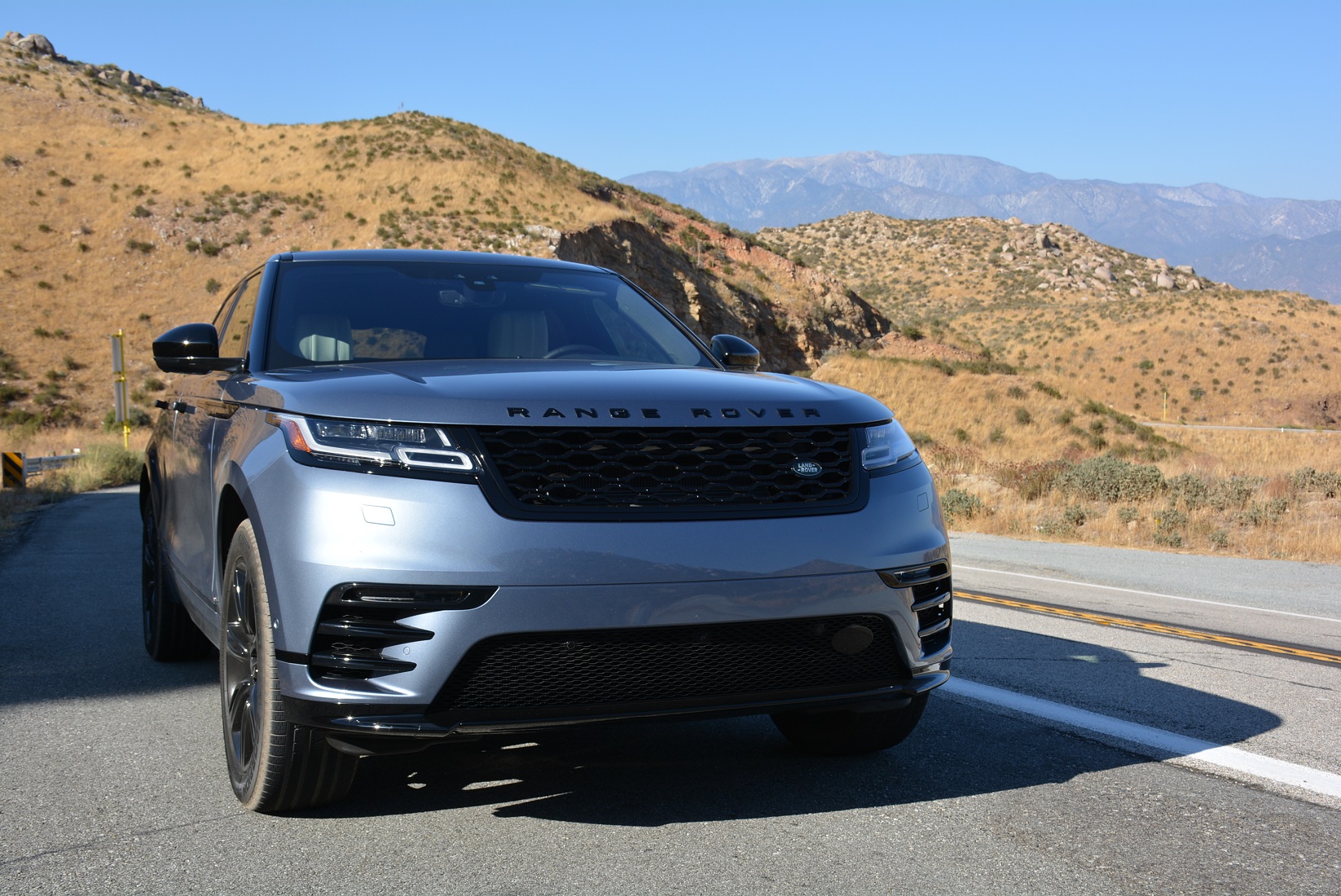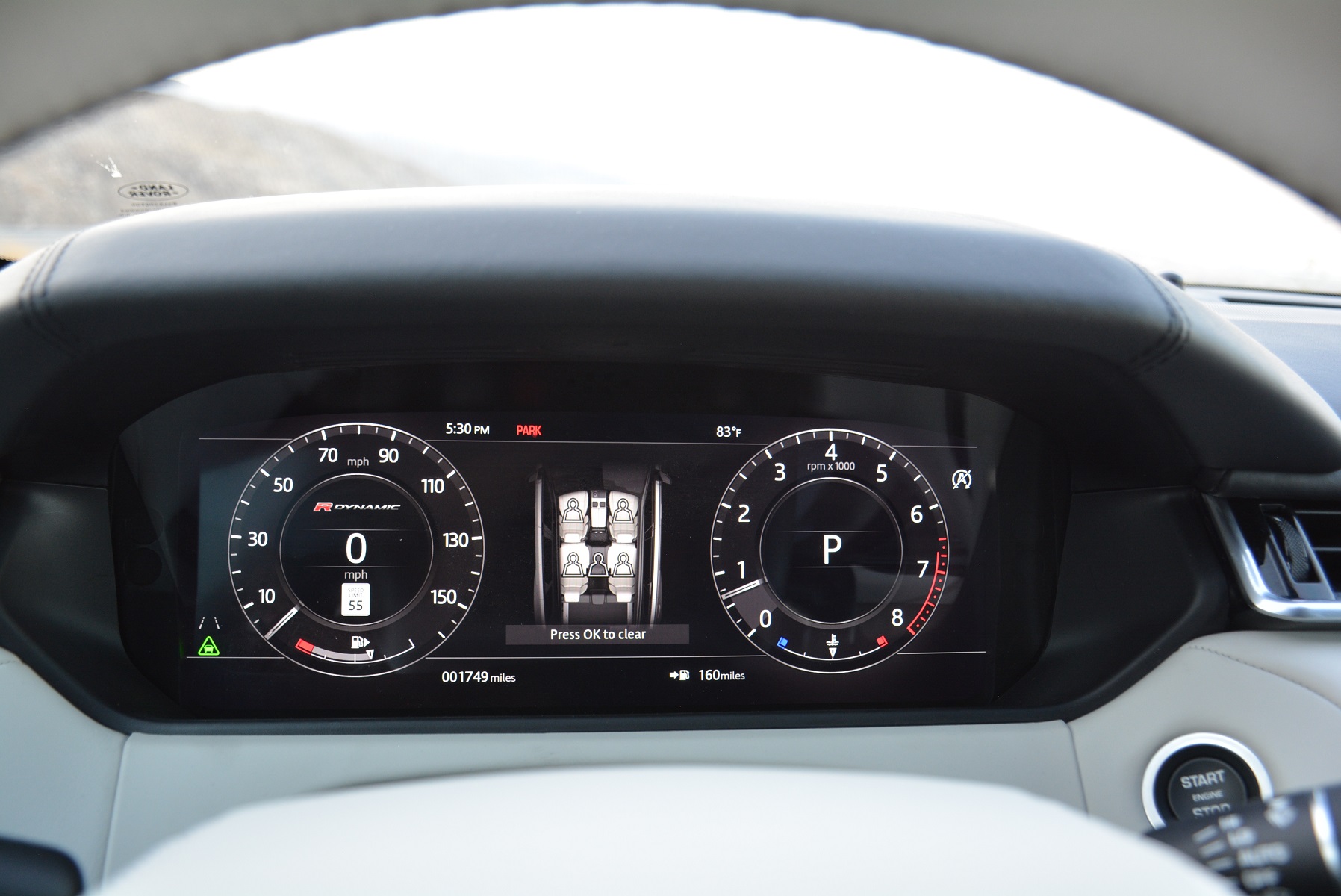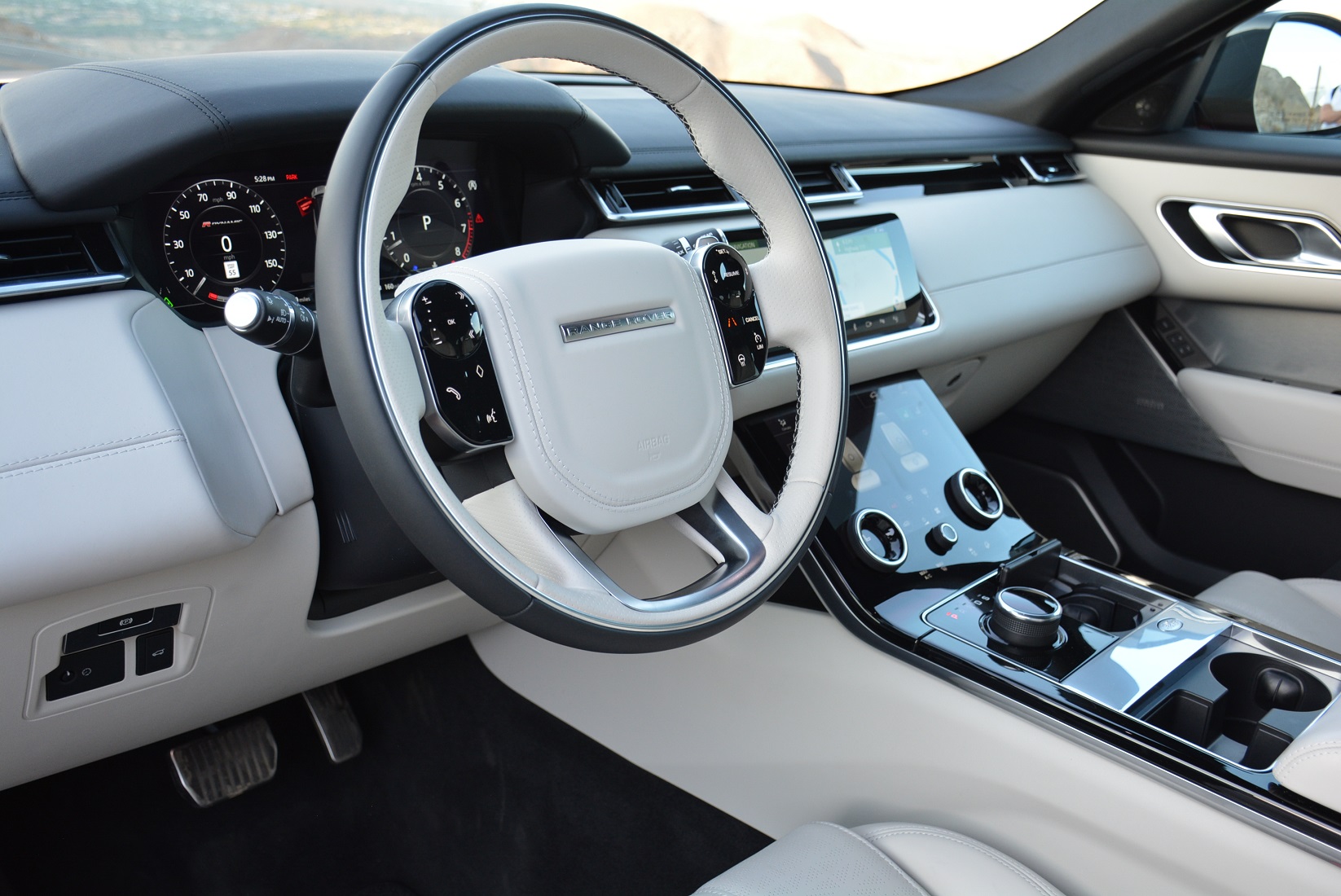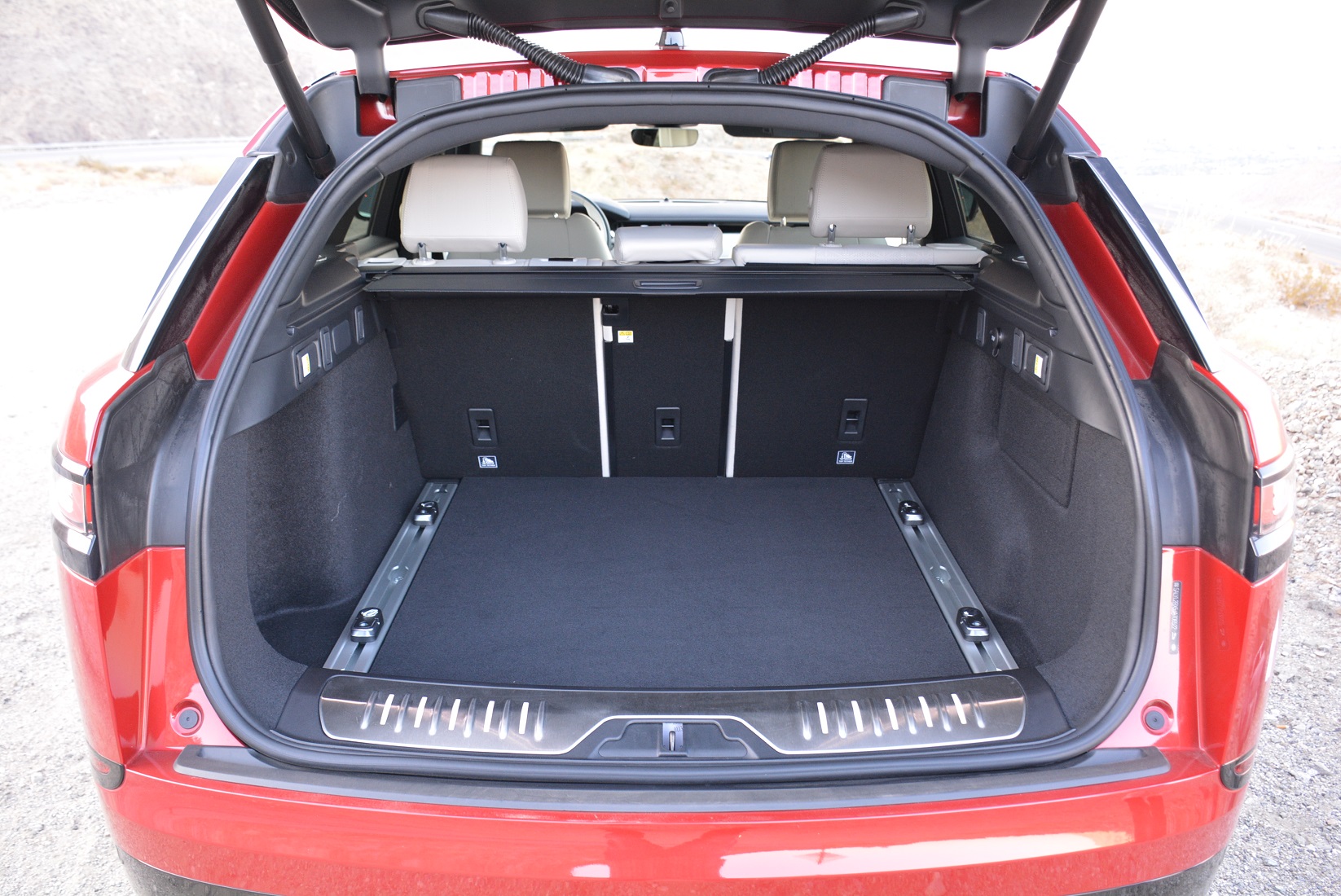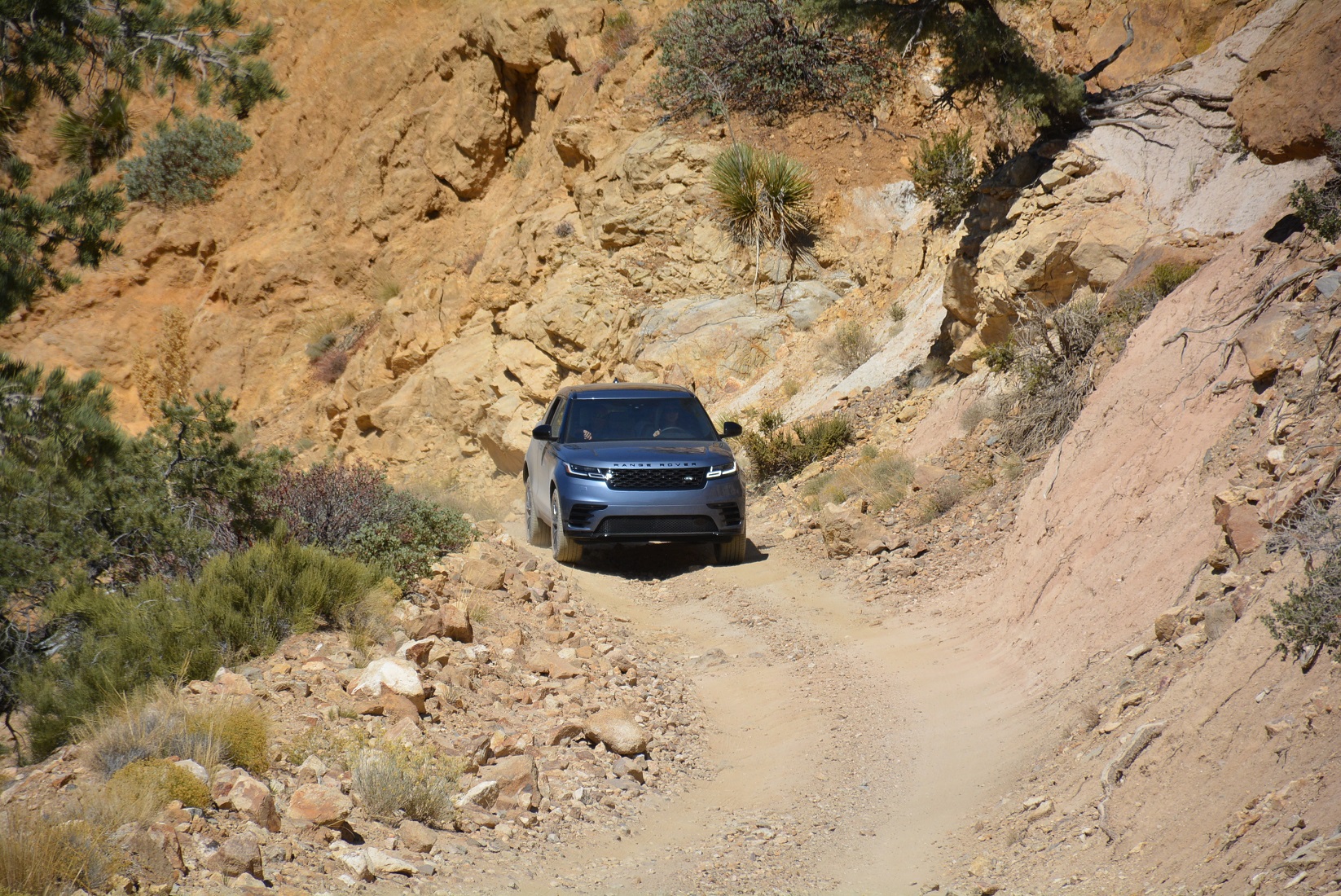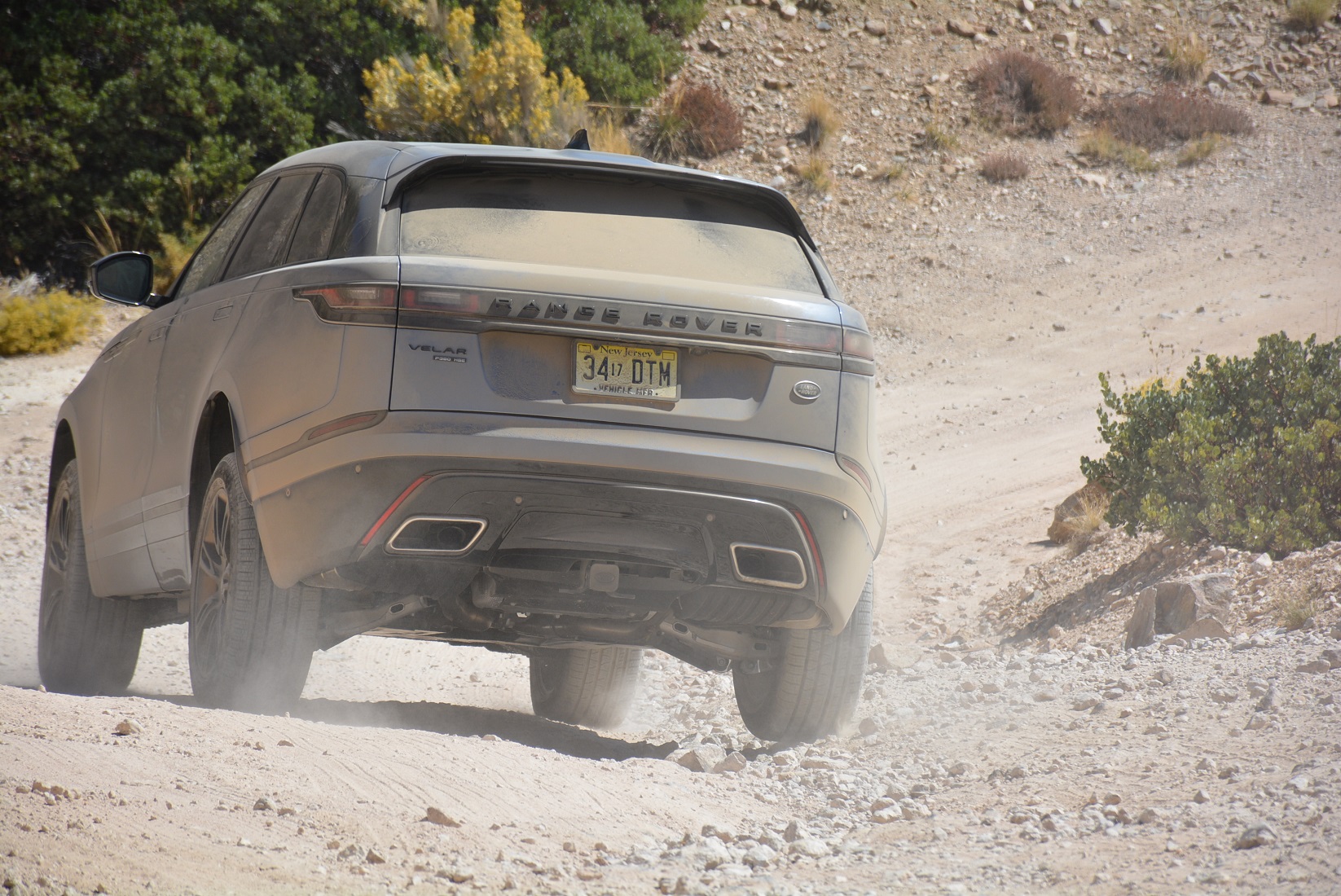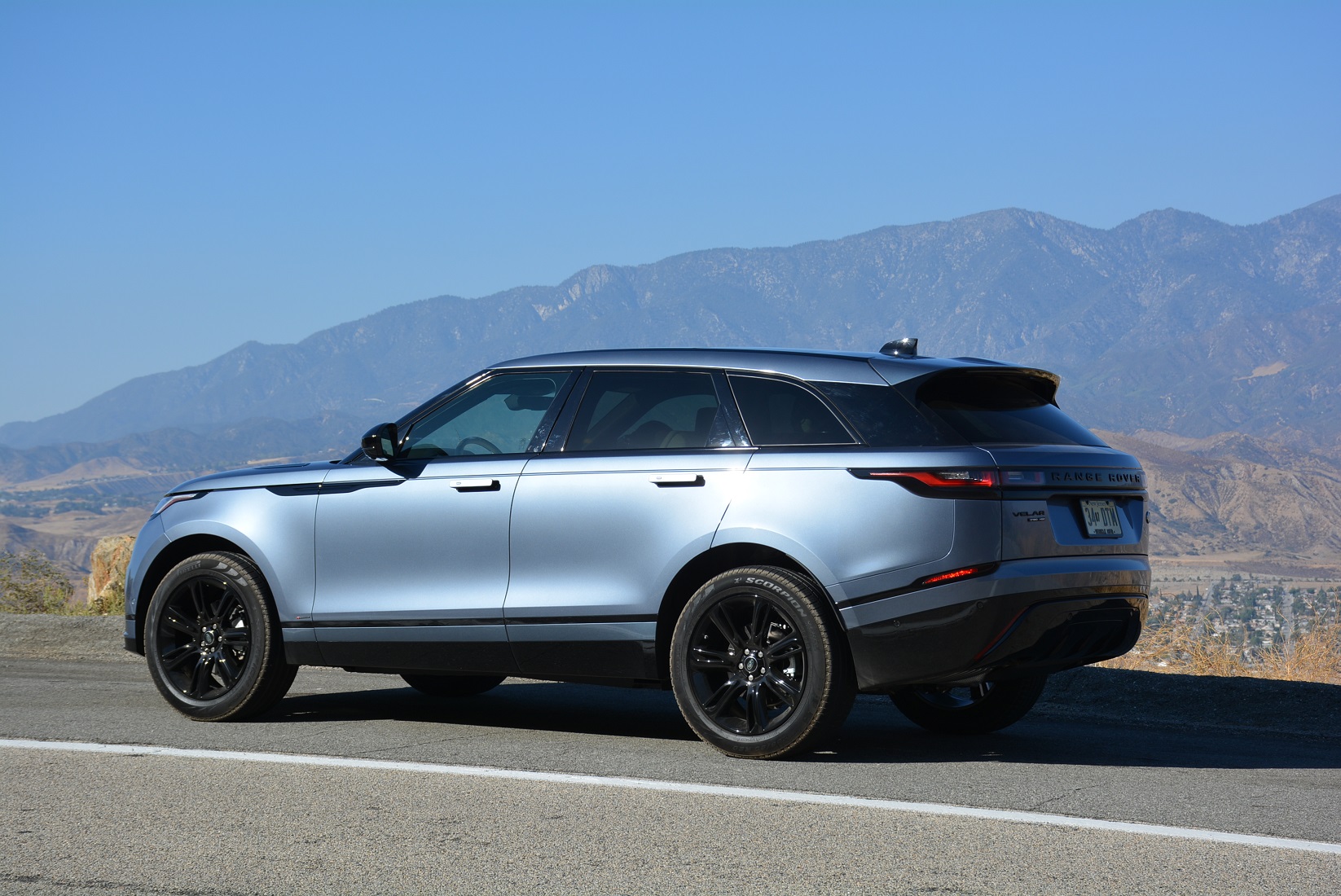First Drive – 2018 Range Rover Velar
- Written by David Miller
- Published in CAR REVIEWS
- font size decrease font size increase font size
- Be the first to comment!
Palm Springs, CA – The modern re-branding of Land Rover is under way. The 67-year-run of Defender has ended and is soon start anew; the all-new Discovery has taken a shift away from boxiness into a more typical rounded-silhouette SUV; and now the Velar, the newest vehicle creation from the British brand, stamps that transformation away from boxy with a rakish roofline.
The 2018 Range Rover Velar is a mid-size SUV that sits in-between the entry-level Evoque and the larger Range Rover Sport. Its overall shape is long and low, but its ground clearance still remains to retain its capable off-road action synonymous with Land Rover Range Rover history.
The width of the Velar is the only measurement that places is it in the middle of its siblings. On one hand, the Velar is only 33 mm longer than Sport, but 455 mm longer than Evoque; while its height is 135 mm shorter than Sport and only 5 mm shorter than Evoque.
Styling takes on a refined, simplistic approach
The California desert destination of Palm Springs wasn't chosen by accident as the location for the Velar's first drive program.
“Palm Springs is a mecca for desert modernism, and that's similar to the design philosophy of the Velar: reduction of lines, simplicity and cleanliness,” explains Gerry McGovern, Chief Design Officer, Land Rover.
The Velar resembles the look of the Jaguar F-Pace – built on the same platform – but takes it to another level of refinement. This is most evident by its standard super-slim LED headlights and flush door handles that allow the Velar's fluid motion to be paramount. These specific touches create a solid design foundation, also contributing to its driving capabilities with a drag coefficient of 0.32 – the best aerodynamic mark ever for the brand.
Its exterior presence may be the initial draw, but its insides equal in impressiveness and continues the visually reductive approach. Inside is where the entire brand needed the most work and the Velar takes on that challenge with an elegant simplicity and sophisticated sanctuary.
The insides are based on a strong horizontal emphasis that centres around twin 10-inch touchscreens that Range Rover is calling the Touch Pro Duo system. The two screens sit on top of one another flanked by two scroll buttons and a central volume knob. It's all done in a clean, organized fashion that's easy-to-understand and responsively quick.
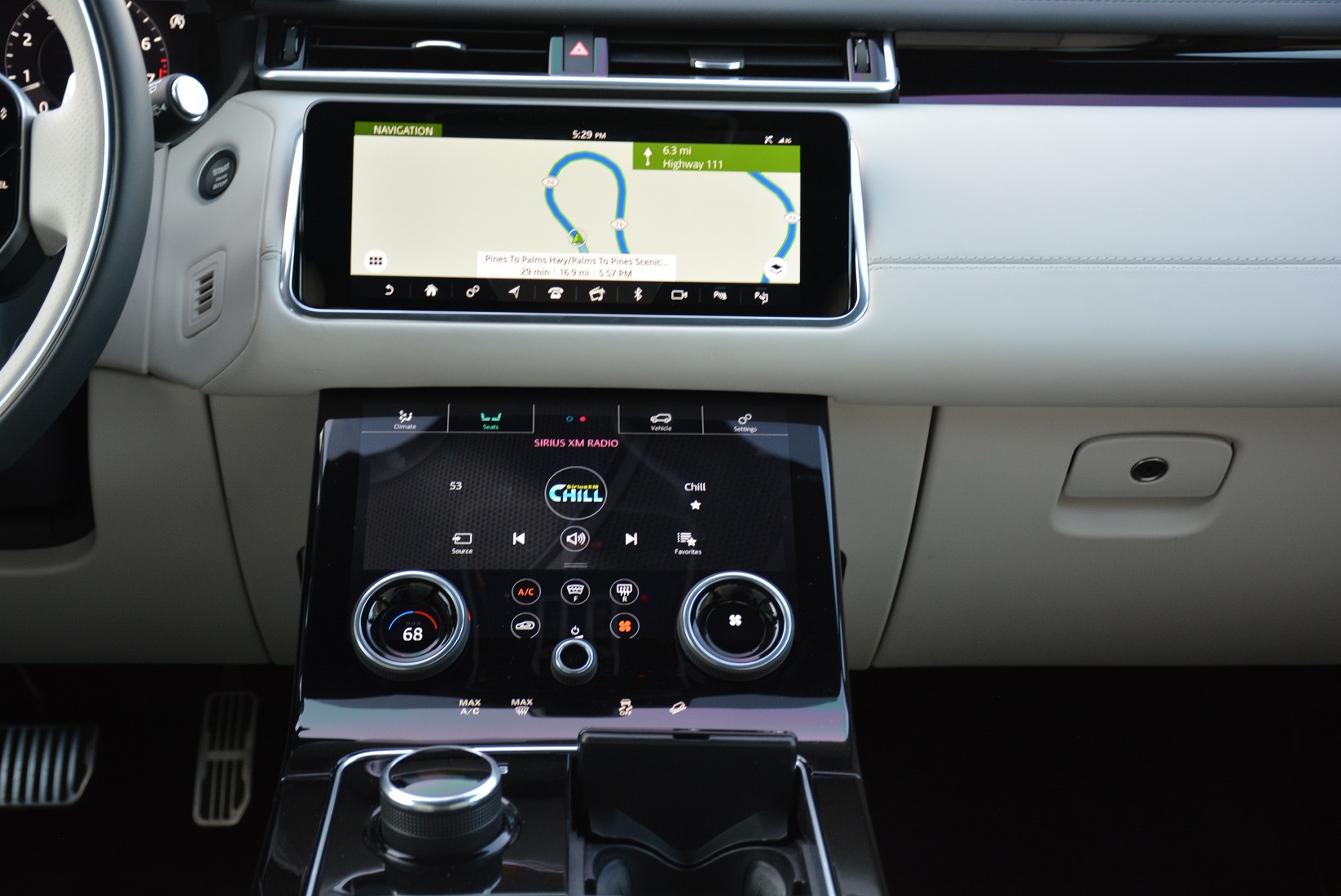
A standout feature is below the top screen. With a touch of your finger, the driver or passenger can switch from controlling his or her massaging seats to switching radio stations, all the while keeping navigation on the main screen. Swipes are effortless with sophisticated technology as its core. In addition, a 12.3-inch TFT cluster (5-inch for the base model) adds to the its refined look with an available heads-up display with four customizable modes.
The rest of the insides are treated with a clean soft-leather dash, while the heated and ventilated seats are adorned with the same leather treatment or Kvadrat, a premium alternative made primarily of wool. Fine details, such as dual flat-surface armrests aid in a comfortable ride that allows you to sit back, relax and take in a massage.
The Velar's design is unquestionably classy, but at times that gets in the way of practicality. One improvement that should be looked into is the size of its glove box and cubby compartments. Even though, there's a little opening behind the centre console, there's no spot in the front that was big enough to fit my DSLR camera. And what does that say for iPads or larger items? Considering this is an SUV built for families, and potential road trips, Land Rover should have shied away from sleekness all around on the inside and allowed for more storage.
In the rear, passengers receive standard headroom and legroom despite its rakish roofline. As for cargo space, the Velar opens up to 1,985 litres when the second row is folded down, and 558 litres for just the trunk.
Powertrain choices and off-road chops
Like most Jaguar Land Rover vehicles, the Velar receives both a gasoline and diesel powertrain. In Canada, the turbodiesel inline-four acts as the base option – a 247-hp turbo, 2.0-litre inline-four gas version takes on that role in the United States – with 180 hp and an impressive 317 lb-ft of torque. The single gas version is a horsepower-heavy 3.0-litre V6 that produces 380 hp and 332 lb-ft of torque. Both options are matched to a ZF eight-speed automatic transmission with paddle shifters and an all-wheel-drive setup with Intelligent Driveline Dynamics (IDD).
The diesel may be optimal from a price standpoint that begins at $62,000, but the V6, starting at $69,000, comes standard with a class-leading air suspension that raises the SUV up to 9.9-inches from 8, which can also come down to 6, if needed. Additionally, it enables the Velar to ford through 25.6-inches of water.
On this day, its wading depth wouldn't be tested, but we were sent off in the V6 to a long stretch of off-road trails through the San Bernadino National Forest. That's where this vehicles shined; not for being the best in the off-road business – other Land Rover Range Rover products can take that medal – but because its shorter and sleeker SUV-package can still climb over mid-size rocks and get through harsh dirt trails without breaking too much of a sweat. Its rear design is so sophisticated, it even keeps dirt in most situations from landing on the back screen.
During the more flat off-road surfaces, the Velar was placed in regular terrain mode, but as the route became trickier, the Terrain Response Control system came into play. It can be optimized for the likes of sand, mud and snow, along with customizable suspension and steering features such as Dynamic, Comfort and Eco that significantly change the feeling behind the wheel.
It's nice to see the Velar in an off-road setting with other Rovers and Jeeps, but its main use by its customer base will be on the paved road. If you're looking for more power and clearance – the V6 will do the job; while the diesel excels in initial acceleration and better fuel economy (8.7 L/100 km was observed on the drive). However in both respects, the Velar isn't the most powerful SUV on the market, nor the most fuel efficient; it sits in a middle-of-the-road comfort zone.
As for steering, the Velar only needed small inputs to guide through a curvy slalom drive. The reaction of the vehicle was crisp and direct without much body roll when it's not off-roading. On the highway, both rides were fairly quiet, blocking out most of the outside noise mirroring the calmness of its interior.
Verdict
The all-new 2018 Range Rover Velar certainly fills a gap at a time when consumers are in desperate need of an SUV fix. Diesel may be the more frugal and fuel-efficient option, but the British brand expects more loaded V6s to be purchased at a rate of eight in ten.
The Velar can be summed up as one of the best overall mid-size SUVs in its segment. Outside of its off-roading abilities, the Velar stands out on design both inside and out, with a little towing on the side. Those features form a great package that places it in a good spot as it competes with the likes of the Porsche Macan and Cayenne, Audi Q5, BMW X4 and X6 and Mercedes-Benz GLC and GLE.
